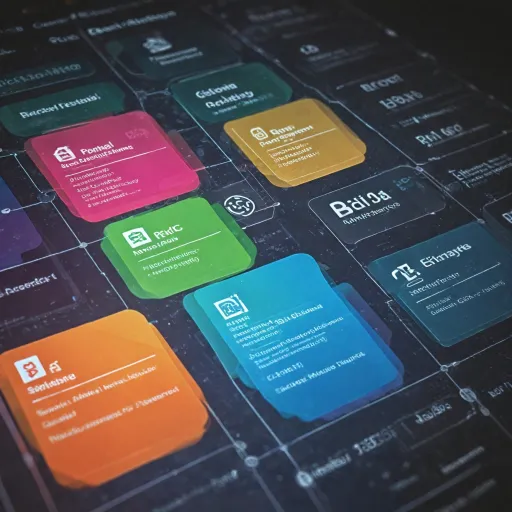
Understanding the basics of siop planning in HR
What is SIOP and Why Does it Matter in HR?
Sales, Inventory, and Operations Planning (SIOP) is a process that brings together key business functions—sales, operations, supply chain, and human resources—to create a unified plan for meeting customer demand. In the context of HR, SIOP planning is about aligning workforce resources with business needs, ensuring that the right talent is available to support sales forecasts, inventory optimization, and service levels. This integrated approach helps companies balance demand and supply, optimize working capital, and improve customer service.
The SIOP Process and Its Impact on Workforce Planning
The SIOP process involves regular meetings and data-driven decision making to review sales forecasts, inventory levels, and operational plans. HR teams play a critical role by providing insights into workforce capacity, skills inventory, and resource allocation. This collaboration enables better planning for recruitment, training, and talent deployment, supporting the company’s ability to respond to changing business conditions.
- Inventory management: HR analytics help track workforce inventory, identifying gaps and surpluses in skills and headcount.
- Sales operations: By understanding sales forecasts, HR can anticipate hiring needs and align talent with business priorities.
- Supply chain integration: HR supports the supply chain by ensuring the right people are in place to meet production and service targets.
Key Benefits of Implementing SIOP in HR Analytics
Implementing SIOP in HR analytics leads to more effective business planning and improved service levels. It enables organizations to:
- Make informed decisions based on real-time data
- Optimize workforce resources and reduce costs
- Enhance customer service by ensuring adequate staffing
- Improve inventory operations and working capital management
Understanding the basics of SIOP planning in HR is essential for companies looking to integrate business functions and drive better outcomes. For more on how compensation strategies fit into HR analytics, see this guide to compensation DOE in HR analytics.
Integrating siop planning with workforce analytics
Connecting Workforce Analytics with the SIOP Process
Integrating sales, inventory, and operations planning (siop) with workforce analytics is a key step for companies aiming to align their human resources with business goals. The siop process brings together data from sales forecasts, inventory management, and operations planning to create a unified business plan. When workforce analytics is added to this mix, HR professionals can make more data-driven decisions that support both supply chain efficiency and customer service levels.
- Data-driven decision making: By combining HR data with sales and operations data, companies can better forecast demand for talent and align staffing plans with business needs.
- Optimizing resources: Workforce analytics helps identify gaps in skills and capacity, allowing HR teams to plan for recruitment or training in sync with inventory and sales operations.
- Improved service levels: Integrating siop with HR analytics ensures the right people are in place to meet customer demand, supporting higher service levels and efficient inventory management.
- Inventory optimization: Understanding workforce capacity helps balance inventory levels, reducing excess working capital and supporting leaner operations.
The integration of siop and HR analytics is not just about numbers. It’s about creating a process where business functions work together, using shared data and forecasts to support company objectives. This approach helps break down silos between HR, sales, and operations, making the entire supply chain more responsive and agile.
For a deeper dive into the role of siop in HR analytics, you can explore this guide on the role of industrial-organizational psychology in HR analytics.
Aligning talent management with business objectives
Connecting Talent Strategies with Business Priorities
Aligning talent management with business objectives is a crucial step in successful siop planning. When organizations synchronize their workforce strategies with broader business goals, they can better anticipate demand, optimize resources, and respond to market changes. This alignment ensures that the right people are in the right roles at the right time, supporting the company’s sales, operations, and supply chain needs.
- Demand-driven workforce planning: By integrating sales forecasts and inventory data, HR can anticipate talent needs based on business cycles and customer demand. This approach helps avoid both understaffing and overstaffing, improving service levels and working capital efficiency.
- Cross-functional collaboration: The siop process encourages HR to work closely with sales, operations, and supply chain teams. Sharing data and insights across business functions leads to more accurate forecasts and better decision making.
- Inventory optimization and talent: Just as inventory management aims to balance supply and demand, talent management should ensure the right mix of skills and experience to meet business plans. This means using analytics to identify gaps and proactively develop or acquire needed capabilities.
Implementing siop in HR analytics also means leveraging data-driven insights to support business planning. For example, analyzing turnover rates, skill inventories, and workforce productivity can inform both short-term and long-term plans. This helps companies respond quickly to changes in customer demand or supply chain disruptions.
For organizations looking to optimize their HR processes, understanding how time-off bidding impacts workforce availability is key. Explore more about the dynamics of time-off bidding in HR analytics and how it influences resource planning and service delivery.
Ultimately, aligning talent management with business objectives through siop planning empowers HR to support company growth, improve customer service, and drive operational excellence.
Overcoming data challenges in siop planning
Common Data Obstacles in SIOP for HR
Implementing SIOP (Sales, Inventory, and Operations Planning) in human resources analytics often brings data challenges to the surface. The process relies on accurate forecasts, inventory data, and seamless integration between business functions. However, HR teams can face several obstacles when trying to align workforce data with the broader supply chain and operations planning efforts.
- Data Silos: HR, sales, and operations often use different systems. This fragmentation makes it difficult to consolidate data for effective decision making and business planning.
- Data Quality: Inconsistent or outdated employee records, inaccurate sales forecasts, and incomplete inventory information can undermine the reliability of the SIOP process.
- Timeliness: Delays in updating workforce or inventory data can lead to misaligned plans, affecting demand supply balance and customer service levels.
- Volume and Complexity: Large companies generate vast amounts of data across the supply chain, from sales operations to inventory management. Sorting through this information to find actionable insights is a key challenge.
Best Practices for Data Integration
To overcome these challenges, organizations need a data-driven approach that supports the SIOP process. Here are some practical steps:
- Centralize Data: Integrate HR, sales, and inventory systems to create a single source of truth. This supports accurate planning and inventory optimization.
- Standardize Processes: Use consistent data definitions and reporting formats across business units. This helps align workforce analytics with supply chain and operations planning.
- Automate Data Collection: Implement technology to automate the flow of information between HR and other business functions. Automation reduces errors and improves the speed of decision making.
- Regular Data Audits: Schedule routine checks to ensure data accuracy and completeness. This is essential for reliable forecasts and effective inventory operations.
Enabling Data-Driven SIOP in HR
When HR teams address these data challenges, they can better support the company’s SIOP goals. Improved data quality and integration enable more accurate sales forecasts, optimized inventory, and better alignment between workforce plans and business objectives. Ultimately, this leads to higher service levels, reduced working capital, and more agile responses to customer demand.
Leveraging technology for effective siop planning
Modern Tools for Smarter Decision Making
Technology is now at the heart of effective siop planning in human resources analytics. Companies are increasingly relying on advanced tools to connect their sales, inventory, and operations planning processes. These solutions help organizations turn complex data into actionable insights, making it easier to balance demand and supply, optimize inventory, and improve customer service levels.
- Data Integration Platforms: These platforms bring together information from sales forecasts, workforce planning, and inventory management. This unified view supports better decision making and helps align business functions.
- Predictive Analytics: Predictive models use historical data to forecast demand, supply, and workforce needs. This allows HR teams to proactively plan resources and manage working capital more efficiently.
- Cloud-Based Solutions: Cloud technology enables real-time collaboration across the supply chain and HR teams. It also makes it easier to implement siop processes and adapt plans as business needs change.
- Automation Tools: Automating repetitive tasks in the siop process, such as data collection and reporting, frees up HR professionals to focus on strategic planning and talent management.
Driving Value Across the Business
Implementing siop technology is not just about efficiency. It also supports business planning by improving inventory optimization, reducing costs, and enhancing service levels. When HR analytics are connected with sales operations and supply chain data, companies can create more accurate plans and respond faster to market changes. This data-driven approach leads to better resource allocation and improved customer satisfaction.
| Technology | Key Benefits |
|---|---|
| Data Integration | Unified view of sales, inventory, and workforce data |
| Predictive Analytics | Improved demand and supply forecasts |
| Cloud Solutions | Real-time updates and collaboration |
| Automation | Streamlined processes and reduced manual work |
By leveraging these technologies, companies can implement siop more effectively and ensure their HR analytics support both immediate and long-term business goals. This creates a more resilient organization, ready to adapt to changing market demands and customer expectations.
Measuring the impact of siop planning on HR outcomes
Tracking Success with Data-Driven Metrics
Measuring the impact of SIOP planning on HR outcomes is essential for demonstrating value and driving continuous improvement. The SIOP process brings together sales, inventory, and operations planning, creating a unified approach to managing resources and meeting business objectives. To assess its effectiveness, companies need to focus on key metrics that reflect both operational and human resources performance.
- Workforce Utilization: Analyze how well your workforce is aligned with demand forecasts. This helps identify gaps in staffing and ensures the right resources are available when needed.
- Inventory Optimization: Track inventory levels in relation to workforce capacity. Effective SIOP planning minimizes excess inventory and reduces working capital requirements, while maintaining service levels.
- Customer Service Levels: Monitor how well HR supports business functions in meeting customer expectations. High service levels often indicate successful alignment between demand, supply, and talent management.
- Employee Engagement and Retention: Evaluate the impact of SIOP-driven decision making on employee satisfaction. A well-implemented SIOP plan can improve engagement by providing clear roles and growth opportunities.
- Time-to-Fill and Onboarding Efficiency: Measure how quickly HR can respond to changes in sales forecasts and supply chain needs. Faster hiring and onboarding processes support agile business planning.
Continuous Improvement Through Analytics
Implementing SIOP is not a one-time event. It requires ongoing monitoring and adjustment. By leveraging data from sales operations, inventory management, and HR analytics, companies can identify trends, anticipate challenges, and refine their plans. This data-driven approach supports better decision making and helps maintain a competitive edge.
Regularly reviewing the outcomes of SIOP planning ensures that HR remains aligned with business goals, supports efficient supply chain operations, and delivers value across the company. As organizations continue to integrate technology and analytics into their SIOP process, the ability to measure and improve HR outcomes will only grow stronger.













